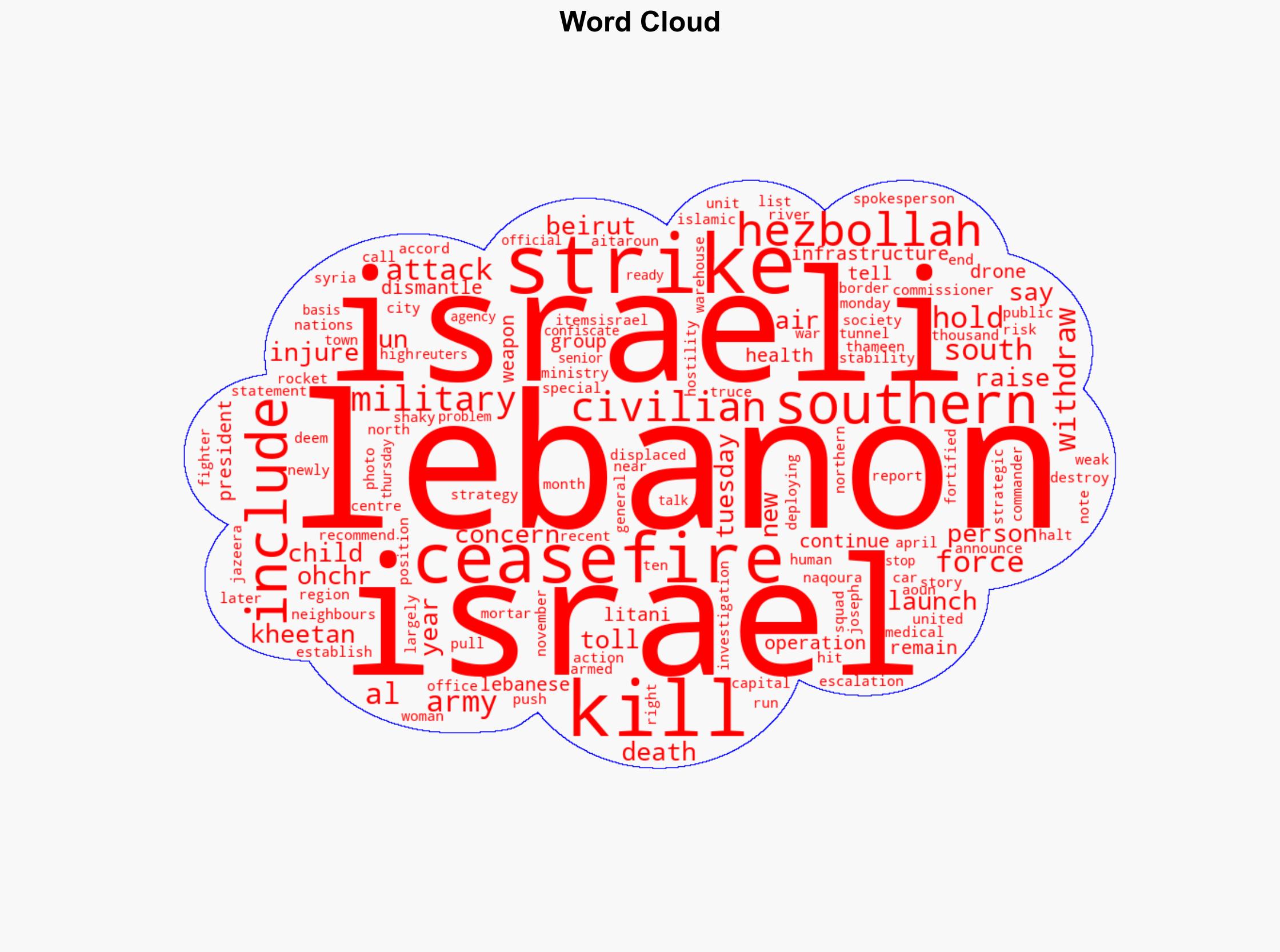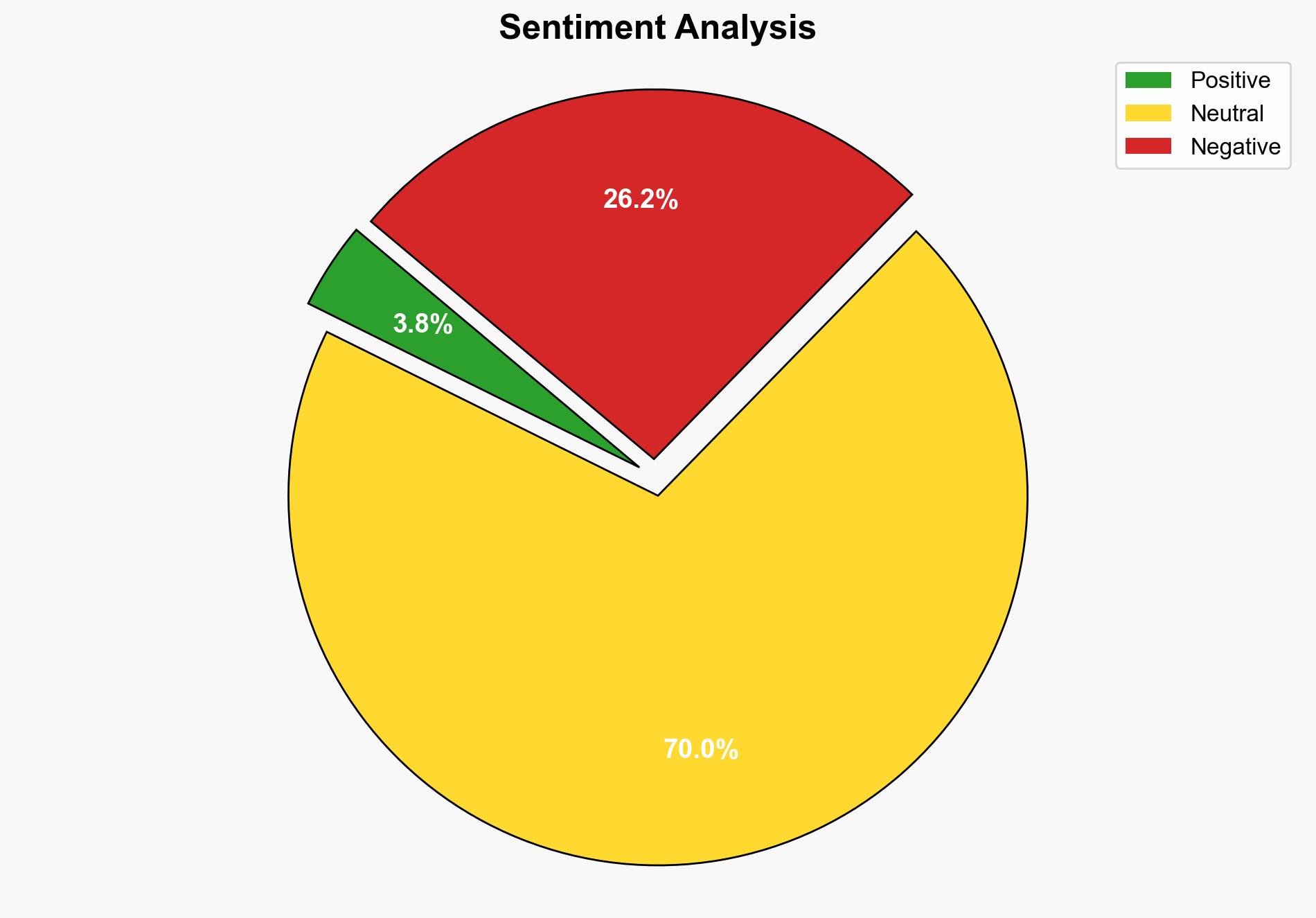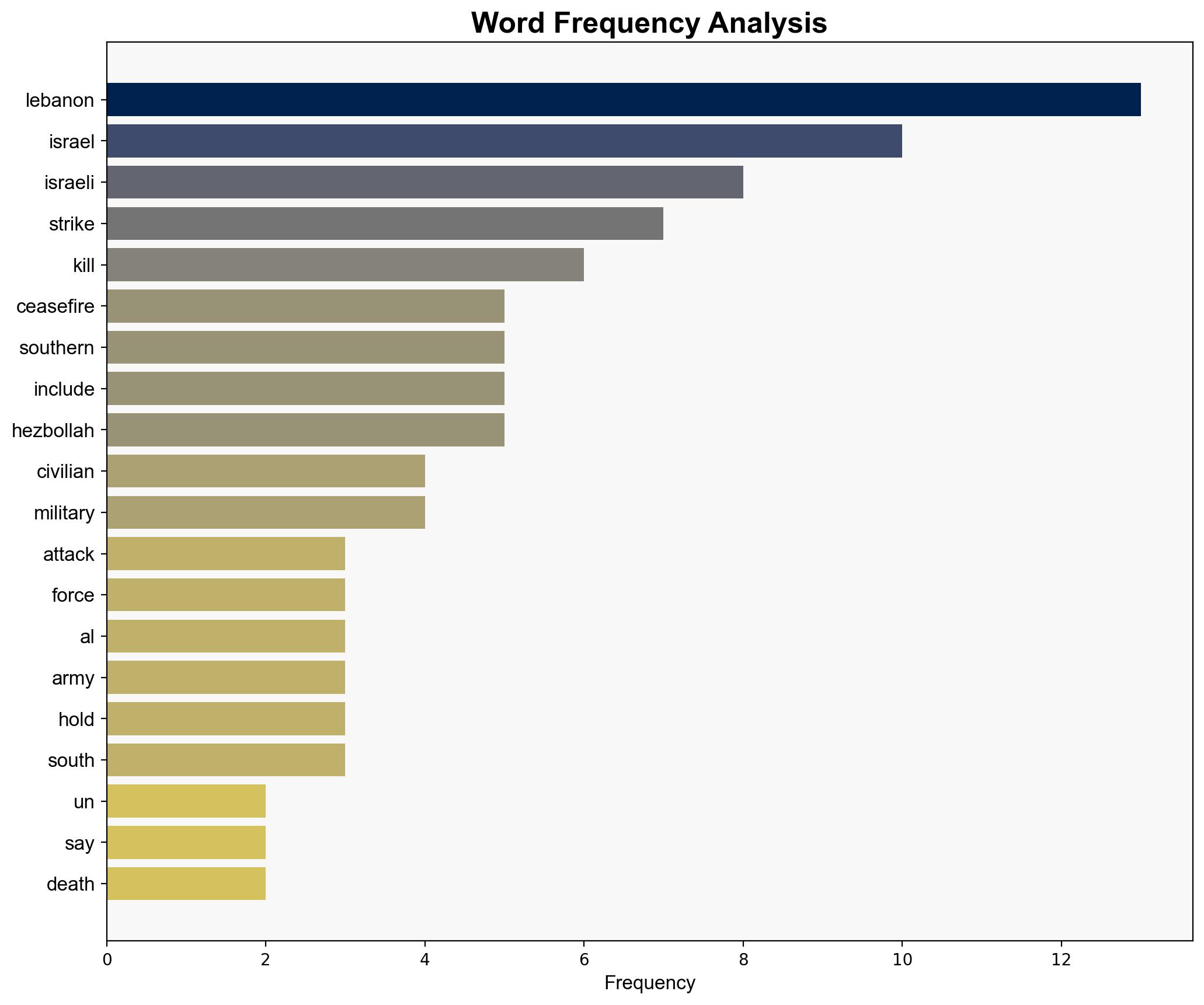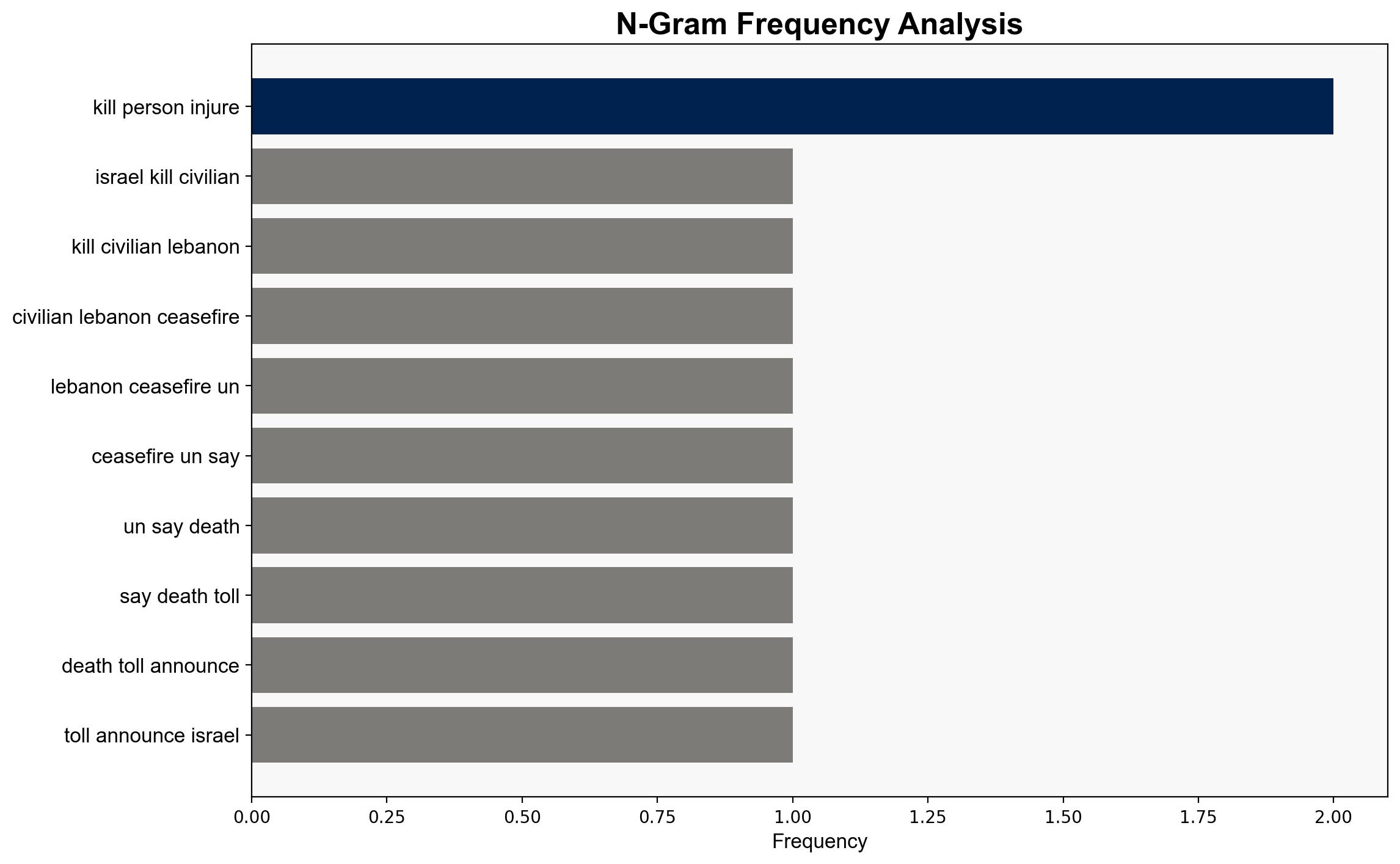Israel has killed at least 71 civilians in Lebanon since ceasefire UN says – Al Jazeera English
Published on: 2025-04-15
Intelligence Report: Israel has killed at least 71 civilians in Lebanon since ceasefire UN says – Al Jazeera English
1. BLUF (Bottom Line Up Front)
Since the ceasefire agreement at the end of last year, Israeli military operations have resulted in the deaths of at least 71 civilians in Lebanon, including women and children. Recent escalations include a drone strike in Aitaroun, killing one and injuring three. The ongoing conflict poses significant risks to regional stability and humanitarian conditions. Immediate investigations into civilian casualties and adherence to ceasefire terms are crucial to prevent further escalation.
2. Detailed Analysis
The following structured analytic techniques have been applied for this analysis:
General Analysis
The conflict between Israel and Hezbollah continues to destabilize the region, with both sides engaging in military actions despite the ceasefire. Israeli strikes have targeted civilian infrastructure, raising humanitarian concerns. The Lebanese government is actively working to dismantle military infrastructure in the south, while Hezbollah expresses willingness to negotiate disarmament contingent on Israeli withdrawal. The situation remains volatile, with potential for further escalation.
3. Implications and Strategic Risks
The ongoing hostilities pose significant risks to national security and regional stability. The destruction of civilian infrastructure could lead to humanitarian crises, while continued military actions threaten to reignite broader conflict. Economic interests in the region are also at risk due to potential disruptions in trade and investment. The displacement of civilians adds pressure on Lebanese resources and infrastructure.
4. Recommendations and Outlook
Recommendations:
- Conduct thorough investigations into civilian casualties to ensure accountability and prevent future incidents.
- Encourage diplomatic engagement between involved parties to reinforce the ceasefire and address underlying issues.
- Support humanitarian aid initiatives to assist displaced populations and rebuild civilian infrastructure.
Outlook:
Best-case scenario: Successful diplomatic negotiations lead to a sustained ceasefire and gradual de-escalation, allowing for reconstruction and stabilization efforts.
Worst-case scenario: Continued military actions result in a full-scale conflict, exacerbating humanitarian crises and destabilizing the region further.
Most likely outcome: Intermittent skirmishes persist, with periodic escalations and temporary lulls, maintaining a fragile and unstable peace.
5. Key Individuals and Entities
Significant individuals and organizations mentioned in the report include: Thameen Al-Kheetan, Joseph Aoun. Key entities involved are the United Nations, the Israeli military, Hezbollah, and the Lebanese government.





